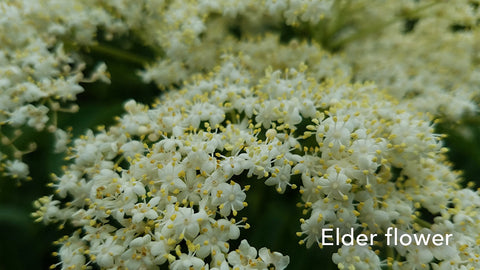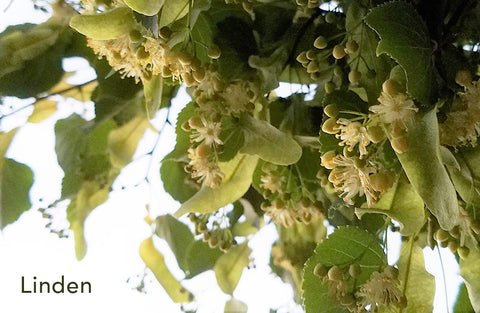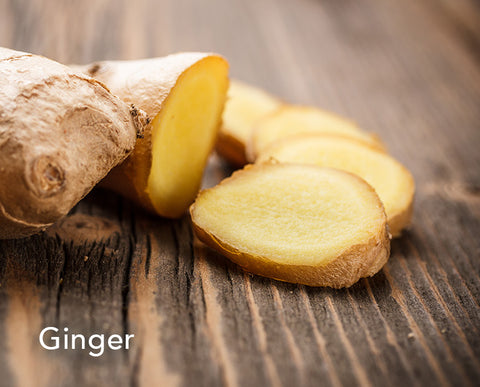Traditional warming strategies for seasonal wellness to bring winter comfort and immune support
Embedded now in the colder months, our thoughts turn to comfort and wellness: during this time of year, that can often mean seeking out immune support. And if you look around at apothecaries and supplement shelves, you often see two plants featured prominently (and for good reason): elderberry (Sambucus species, we turn to the native S. canadensis) and echinacea (Echinacea purpurea, for the most part, though other species can be used as well). These are excellent allies that should have a prominent place in your herbal medicine cabinet. Equipped with modern pharmacological science, we are starting to understand just why these plants can be so helpful. But traditional herbalists will tell you that, to really shine, you should blend these herbs into a formula that adds two key actions: supporting healthy circulation and maintaining the skin’s natural ability to perspire.*
Both actions are linked to a concept called diaphoresis, which is the body’s process of producing and releasing sweat (water and salts, mostly) through the pores. Diaphoresis occurs when we exercise, take a hot bath, or sit in a sauna: all these strategies can be used to help maintain seasonal wellness. Sometimes, spicy plants (think ginger, Zingiber officinale, or cayenne, Capsicum frutescens) can encourage diaphoresis, too. Galen, the famous physician from the late Roman Empire (2nd century), called these herbs “heating”, reserving the description of “heating in the third degree” for the really, really spicy ones. Everyone has a different tolerance for these more heating plants, but most can tolerate the gentler aromatic diaphoretics. Adding them to your seasonal wellness blends will make a big difference: you’ll find in them the comfort and warmth you seek. Before we turn to some of my favorite diaphoretics, let’s take a moment to remember why echinacea and elderberry are still the foundation of formulas for seasonal wellness.

Echinacea, if you’ve ever tasted it fresh, provides a singular “tingle” that immediately makes your mouth feel alive. This is due to a class of compounds called alkyl-amides, and these help support the normal production of secretions in the sinuses, mouth and throat. Maintaining this function is important during the winter season, as the barrier our throat and respiratory passages provide is a key component of healthy immune function. Maintaining a healthy level of moisture here is part of the answer, but echinacea goes a step further: it also supports the levels of antibodies (like IgA) found in our saliva and mucous secretions. These antibodies are another essential part of the immune system’s healthy function: with echinacea these “barrier defenses” stay active all season long.*

Elderberry has a role to play in the health and integrity of our mucous membrane barriers, too. Polyphenols found in the berry (anthocyanins, to be specific), which are responsible for its deep purple color, are also tonics to the cells that line nose, sinuses, throat and bronchial passages. They support the integrity of the cells’ membranes, while also acting as antioxidants.. So while echinacea focuses on a healthy mucus layer, elderberry goes a bit deeper, especially if taken as a syrup where those polyphenols can come into direct contact with the tissue of the mouth and throat.*
Both echinacea and elderberry also contain a diverse cocktail of polysaccharides, a wide class of herbal compounds that have immune-supporting activity. You’ll also find these in mushrooms, immune tonics like astragalus (Astragalus membranaceus), and even oatmeal (prepared from Avena sativa). Echinacea’s arabinogalactans and elderberry’s pectins (both are examples of specific polysaccharides) seem able to support immune cell activity.* This is especially important when the air is cold and we’re packed into tight spaces with a bunch of friends (or fellow travelers). So it’s nice that our two key allies don’t just support healthy barriers--they help keep our immune cells working, too. No wonder they have such a long and confident history of use.
But while elderberry is key, few remember the elder flower: also from S. canadensis, though often from the European elder S. nigra, this aromatic blossom is a classic herbal diaphoretic, and makes a great combination with the berry, supporting circulation while the fruit supports immunity. Elder flower is a good example of an aromatic diaphoretic, and we should contrast that class of herbs with the more intense pungent diaphoretics. Aromatic diaphoretics support circulation and often have a gentle relaxing quality, while pungent diaphoretics support all secretions, including mucus, saliva, and digestive juices--as well as perspiration.* Let’s look at some examples of each.
 Elder flower was always traditionally made into a tea, and taken warm, all by itself (though it’s fine to mix with other herbs, too). It also makes a good extract. It supports mucous secretions and health of the nose and airways, and has a slightly sweet, floral quality many like. About one tablespoon of flowers is enough to make a good hot cup of tea; this is usually taken two or three times a day.*
Elder flower was always traditionally made into a tea, and taken warm, all by itself (though it’s fine to mix with other herbs, too). It also makes a good extract. It supports mucous secretions and health of the nose and airways, and has a slightly sweet, floral quality many like. About one tablespoon of flowers is enough to make a good hot cup of tea; this is usually taken two or three times a day.*
 Meadowsweet (Filipendula ulmaria) has a lovely wintergreen-like flavor and is another excellent aromatic diaphoretic. It is taken in a similar fashion as elderflower. Many turn to it to help settle an occasional upset stomach, so it’s also a good choice for digestive support. Finally, this herb can support normal recovery after exertion, and folks turn to it to relieve that achy feeling.
Meadowsweet (Filipendula ulmaria) has a lovely wintergreen-like flavor and is another excellent aromatic diaphoretic. It is taken in a similar fashion as elderflower. Many turn to it to help settle an occasional upset stomach, so it’s also a good choice for digestive support. Finally, this herb can support normal recovery after exertion, and folks turn to it to relieve that achy feeling. Linden (Tilia species) makes a fragrant blossom that turns into a delicious, velvety tea or a nectar-sweet, candy-like tincture. Its chief uses are for occasional anxiety and mental stress, though its ability to act as a diaphoretic and support good circulation makes linden a good ally for seasonal wellness, too. The dose is a little higher than that of elder flower: try starting with four or five teaspoons per cup of hot tea. In the south of France and northern Italy, linden blossoms are used in bath sachets for stress support as well as cold-season wellness: there’s nothing quite like a hot linden bath. It helps keep the airways open, really supports circulation, is quite relaxing, and leaves the skin feeling moisturized and soft.*
Linden (Tilia species) makes a fragrant blossom that turns into a delicious, velvety tea or a nectar-sweet, candy-like tincture. Its chief uses are for occasional anxiety and mental stress, though its ability to act as a diaphoretic and support good circulation makes linden a good ally for seasonal wellness, too. The dose is a little higher than that of elder flower: try starting with four or five teaspoons per cup of hot tea. In the south of France and northern Italy, linden blossoms are used in bath sachets for stress support as well as cold-season wellness: there’s nothing quite like a hot linden bath. It helps keep the airways open, really supports circulation, is quite relaxing, and leaves the skin feeling moisturized and soft.*Catnip (Nepeta cataria) is a mild diaphoretic that’s a cousin of the garden mints. It has an interesting flavor and aroma and has a gentle calming effect that can be useful, especially for children. We blend catnip into teas, using about two teaspoons of the dried leaf per cup, or take it as an extract in 30-90 drop doses. It does support healthy perspiration and circulation, but its calming qualities come in handy if a younger member of the family (over age 3) needs its traditional seasonal wellness support and also is experiencing occasional sleeplessness.* Just check with your pediatrician or healthcare provider first.
 Of our pungent diaphoretics, none is more famous than cayenne. Its warming spice is classic during the colder months. While we may think of it as an herb for circulation support (correctly), it is important to remember that cayenne is very pungent and supports secretions across the airways and GI tract, too. You know the feeling you get after eating a few bites of very spicy food? That’s what we’re after when using cayenne to support seasonal wellness. Just be conservative in dosing: rarely is it found at more than 1-2% of a liquid herbal formula, and doses that exceed a small pinch in a cup of tea can be too strong for the untrained palate.*
Of our pungent diaphoretics, none is more famous than cayenne. Its warming spice is classic during the colder months. While we may think of it as an herb for circulation support (correctly), it is important to remember that cayenne is very pungent and supports secretions across the airways and GI tract, too. You know the feeling you get after eating a few bites of very spicy food? That’s what we’re after when using cayenne to support seasonal wellness. Just be conservative in dosing: rarely is it found at more than 1-2% of a liquid herbal formula, and doses that exceed a small pinch in a cup of tea can be too strong for the untrained palate.*
 Ginger is a great alternative to cayenne, with very similar--though less intense--properties. It also has the benefit of helping to relieve occasional nausea, and can be taken in larger amounts: ¼ teaspoon of dried powder, 1 tablespoon of grated fresh rhizome, or 15-30 drops of an extract is a good starting point. A good ginger tea, with maybe a bit of lemon and honey, is a well-loved pungent diaphoretic remedy for the colder months of the year.*
Ginger is a great alternative to cayenne, with very similar--though less intense--properties. It also has the benefit of helping to relieve occasional nausea, and can be taken in larger amounts: ¼ teaspoon of dried powder, 1 tablespoon of grated fresh rhizome, or 15-30 drops of an extract is a good starting point. A good ginger tea, with maybe a bit of lemon and honey, is a well-loved pungent diaphoretic remedy for the colder months of the year.*
Finally, when considering diaphoretic pungent herbs, don’t forget to look at the mustards (the Brassicaceae, or broccoli family). Out of this large clan of plants, horseradish (Armoracia rusticana) stands out for me: it is flavorful, aromatic, and quite pungent--though unlike cayenne and even ginger, its heat does not persist forever. If you’re searching for a quick shot of pungency that also supports mucous and digestive secretions, look no further. The trick is preparing it: fresh is best, so try to find a grated horseradish sauce that uses only vinegar and salt as preservatives. Taking a teaspoon of this, two or three times a day, can have amazing effects, especially if combined with a warm bath, shower or sauna. Fire cider, a combination of horseradish and other herbs (depending on the recipe), is a way to get your pungent dose of Brassicas too.*
And getting your body wrapped in a warm blanket, or settled into a hot bath, especially right before bed supports the actions of the herbs quite well. In some cases, old herbalists in the Alps would bury people to their necks in piles of composting hay, so they could feel the warming effects (in days where lots of hot water was hard to come by, and not everyone had a sauna). This combination of immune-supportive allies, diaphoretics, pungents, and warmth has always served us well during the colder months of the year. So I encourage you to try some of these remedies yourself, or, if you’re exploring elderberry syrups, look for ones that have a little spicy kick. It’s a classic herbalist’s trick and will take you beyond the standard echinacea capsule or elderberry extract.







